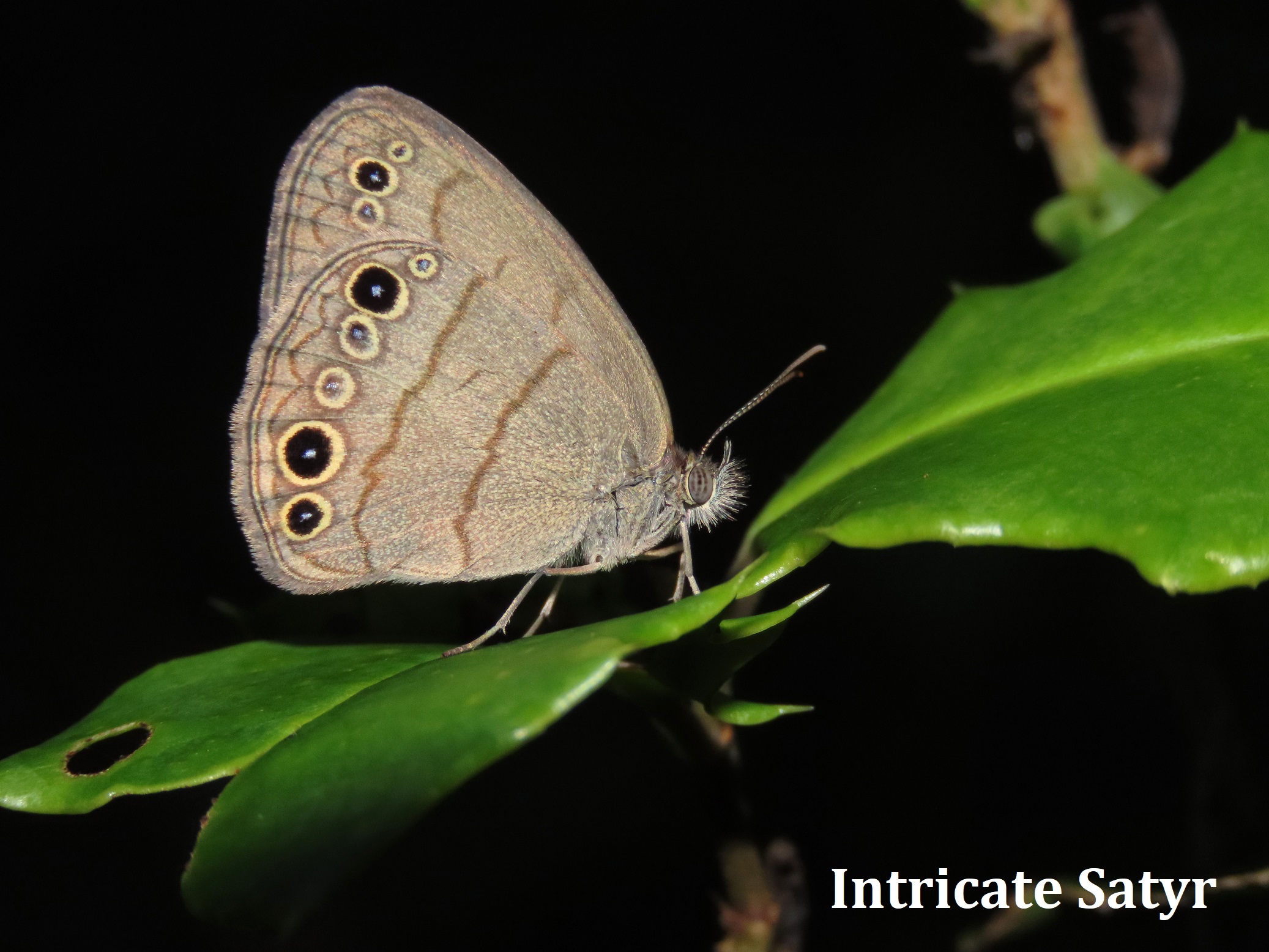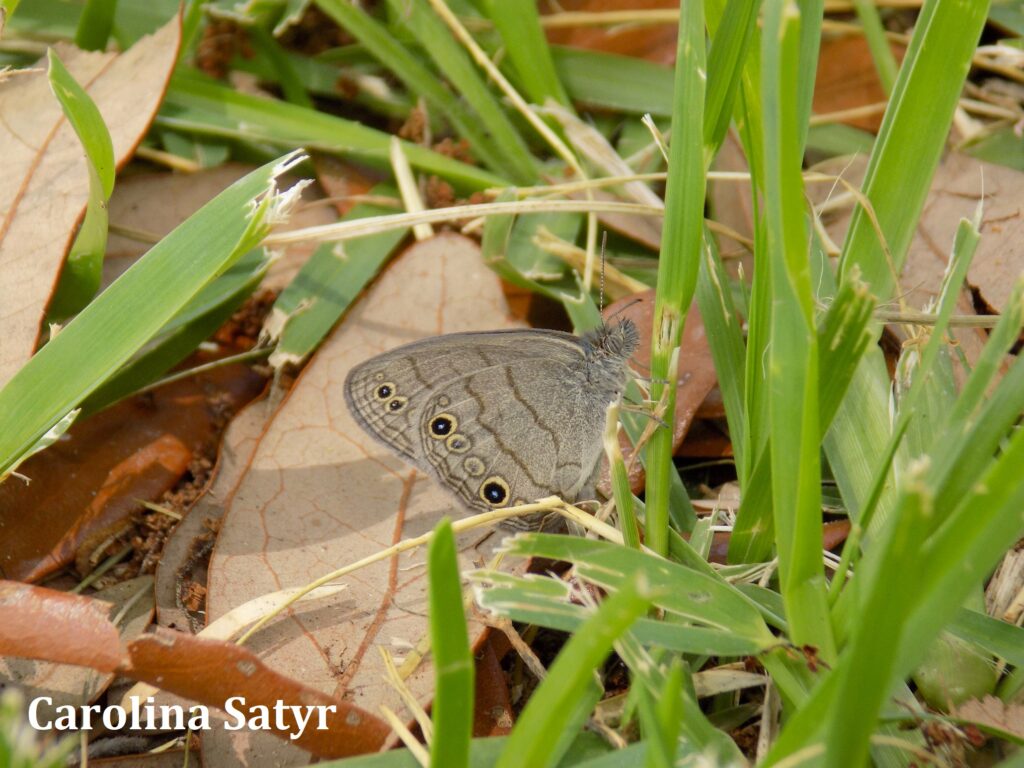

This week for Flora and Fauna Friday, we have a pair of indistinguishable butterflies. A set of Satyrs so subtly distinct it took a genetic study to discover the differences some 220 years after first described. This week we’re talking about one of my pet projects, the Carolina Satyr (Hermeuptychia sosybius) and the Intricate Satyr (Hermeuptychia intricata).
I am not going to get technical on the subject today but instead speak about this species complex as an example in regards to the modern scientific landscape of taxonomy and species discovery. If you want the technical details for some reason, I have a publication on the subject in the Journal of the Lepidopterists’ Society you can read. [Austin, 2018. 72(4):307-313.]
The Carolina Satyr was first described at the end of the 1700s. It’s an incredibly common species of butterfly that eats grass, drinks tree sap, and is found in forests throughout the southeastern United States. There’s nary a woodlot in South Carolina that this insect doesn’t call home. Edisto Island is no exception. What’s incredible about the Carolina Satyr is that it turned out to be two species across nearly half its range. In 2014 a team of researchers performing a phylogenetic study of the genus in North America made the find. What the researchers found was a new species of Satyr in the Southeast US, the Intricate Satyr. Phylogenetics is a field of biology that examines the genome of an organism and compares it to others to determine how they are related. This can reveal when species first appeared, where their ancestors originated, and whether one descended from another. Often, the results lead to reorganization of a genus or creation of a new taxon. Sometimes, like in the case of our Satyrs, they find hidden species. Often these new species are contentious. They’re impossible to tell apart, reproductively indiscrete, or possibly just subspecies. Personally, I’m in the camp of physiological reproductive isolation is a prerequisite for designation of a discrete species.
What’s interesting about the Intricate Satyr is that it is more ancient than the Carolina Satyr and has a narrower range completely within that of the Carolina Satyr. Upon closer examination of specimens, the researchers revealed that it was indeed a discrete and separate species, different not only in genome but physically distinct and incapable of hybridization. A true-blue species by any definition of the word, undiscovered in the eastern United States for over 200 years. Where I come into this story is 2016 when I began researching field identification techniques and the ecology of the Intricate Satyr. The two species are incredibly similar but still distinct. There was not yet robust documentation of the morphology of the new species. At the end of 2018, I published my work detailing the differences I documented between the ecologies of the species in South Carolina and how to successfully identify between the two in the field.
This example of the subtle Satyrs highlights how scientific discovery in the field of biology has changed in North America over the centuries. Gone are yesterdays; the days of hiking through the wilds of the frontier collecting bags upon bags of specimens of new, foreign life forms. However, the days of discovery have never left. Here today are the days of sitting down in a lab and looking really hard at what has already been done and piecing together the puzzle collected by the generations before, one bug at a time, to produce an ever more detailed and intricate view of the world around us. No one noticed this species for two centuries but there were morphological differences that could have distinguished them all this time. Just think what else is out there under our nose, waiting for someone to look close enough to notice.